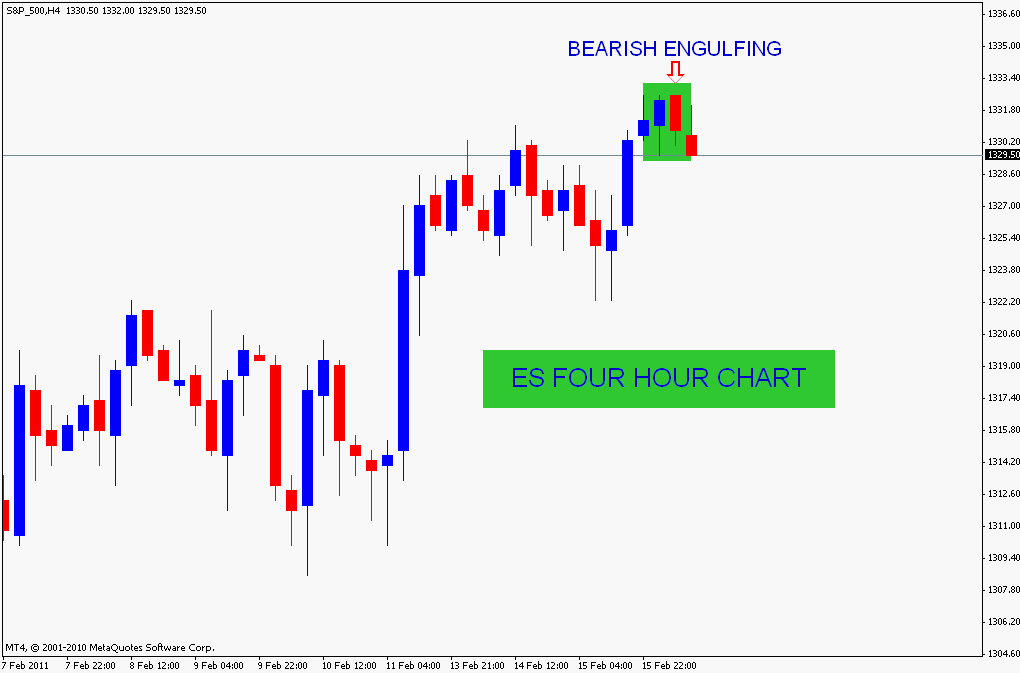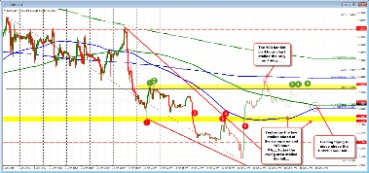Contents:

As such, it is used by investors when making crypto buying or selling decisions. The Harami Candlestick Pattern is considered a trend reversal pattern that can either be bullish or bearish, depending on the direction of the price action. A proper education in price action wouldn’t be complete without understanding when, how, and where to go long on a stock.


The harami cross pattern can be easily confused for a star Doji , which is a different indicator. A Doji candlestick is not signaling a trend change or something like that. It is just a sign of the uncertainty on the market as star Doji doesn’t have any elements except the hollow body candle itself. The harami cross is different because it has two candles, meaning that this pattern indicates a trend direction and shows a possible reversal.
Trading a Bearish Harami
Mr. Pines has https://g-markets.net/d on the NYSE, CBOE and Pacific Stock Exchange. In 2011, Mr. Pines started his own consulting firm through which he advises law firms and investment professionals on issues related to trading, and derivatives. Lawrence has served as an expert witness in a number of high profile trials in US Federal and international courts.
The bullish hamari occurs when the original trend and candlestick are downward, hinting at a bullish reversal. Alternatively, the bearish hamari occurs when the original trend and candlestick are upward, and doji is fully contained by the previous candlestick, hinting at a bearish reversal. Below, we are going to show you how to confirm the bullish harami pattern and find good entry and exit levels by using the RSI, MACD, and Fibonacci ratios.

It gives a bullish signal only after the price has broken above the high of the first candlestick. The Harami Cross pattern, just like the regular Harami pattern, is a candlestick pattern that can be a Bullish or Bearish trend reversal based on where it is positioned on the chart. Bullish Harami patterns can have either short or long tails, and are considered more reliable when found in an oversold market. While not all reversals will result in significant price movements, traders will often use this pattern as an indication to enter into long positions. The four strategies covered in this article are applicable to other candlestick reversal patterns. One point to note is that these four trading strategies can be used in combination with all other candlestick reversal patterns.
What Are the Common Mistakes to Avoid When Trading with a Bullish Harami?
Let’s take a look at a simple example that a day trader could have profited handsomely off of. What does a harami tell us about the condition of the market? During a bullish move, the harami candlestick indicator tells us that strength in the previous candle is dissipating. One way of trading the pattern is to use pending orders. A pending order is where you open a trade that will only be initiated when a certain condition is met. In case of a bullish harami, you could place a buy-stop above the upper shadow of the mother candlestick.
What is a Marubozu Candlestick?
A Marubozu Candlestick pattern is a candlestick that has no “wicks” (no upper or lower shadow line). A green Marubozu candle occurs when the open price equals the low price and the closing price equals the high price and is considered very bullish. A red Marubozu candle indicates that sellers controlled the price from the opening bell to the close of the day so it is considered very bearish.
It can be used to enter a long position or to exit a short position. The bullish harami candlestick formation is a trend reversal pattern that occurs at the end of a downward trend and signals a buying opportunity. There are different opinions over the purpose of the harami candlestick pattern. Some read it as a trend reversal signal, while others don’t see it as a clear signal and prefer to wait for later developments or use other indicators to figure out how to act. Below, you can see how to identify the harami pattern on a trading chart. The Bullish Harami is the original pattern, characterized by a large bearish candle followed by a small bullish candle that is contained within the range of the large bearish candle.
Harami Cross
The unexpected negative drift in the market causes panic making the bulls to unwind their positions. On P2 the market unexpectedly opens lower, displaces the bulls, and sets in a bit of panic to bulls. The lowest low of the pattern will be the stoploss for the trade.
- If you spot the harami pattern at the end of the downward chart line, it is a bullish harami signal.
- If the market pushes decisively beyond the first candlestick of the Harami, skip it.
- First, we start with the red circle at the beginning of the chart.
- The second candle opens at a significantly higher position than the previous candle.
- As per candlesticks, all the patterns you mentioned indicate trend reversals.
- A Marubozu Candlestick pattern is a candlestick that has no “wicks” .
In a downtrend, it means that sellers have failed to close the second candlestick near the low of the previous candlestick. In an uptrend, it means that buyers have failed to follow up on the surge of activity and close the second candlestick at or near the high of the previous candlestick. The first candlestick is seen as the “mother” with a large real body that completely enclosing or embodies the smaller second candlestick, creating the appearance of a pregnant mother.
The TC2000 Pullback Strength scan is a bullish scan that returns stocks trading in established uptrends that have recently experienced a short-term pullback. The best timeframes to trade with a Bullish Harami pattern can vary depending on a trader’s strategy and risk tolerance. Generally, the pattern can form on any timeframe, but the higher the timeframe, the better the signal. A Bearish Harami Candle is formed when there is a large bullish candlestick, followed by a smaller bearish candlestick that is within the range of the first candle.
Bullish Harami: Definition in Trading and Other Patterns – Investopedia
Bullish Harami: Definition in Trading and Other Patterns.
Posted: Sun, 26 Mar 2017 00:36:12 GMT [source]
HowToharami candlestick.com takes no responsibility for loss incurred as a result of the content provided inside our Trading Room. By signing up as a member you acknowledge that we are not providing financial advice and that you are making the decision on the trades you place in the markets. We have no knowledge of the level of money you are trading with or the level of risk you are taking with each trade. HowToTrade.com helps traders of all levels learn how to trade the financial markets. Therefore, to identify the pattern, you need to find a two candle pattern at the bottom of a downward trend with the above features. A breakout, by the way, is a close either above the top of the candlestick pattern or below the bottom of it.
Traders can use technical indicators, such as the relative strength index and the stochastic oscillator with a bearish harami to increase the chance of a successful trade. A candlestick chart typically represents the price data of stock on a single day, including opening price, closing price, high price, and low price. Both bullish and bearish hamari cross patterns need supporting analysis and data to back up what is seen. Confirmation of the hamari cross pattern is also essential.
A related pattern is the three inside up pattern that is found at bottoms. The third candlestick is a bullish candle that opens within or above the real body of the second day and then closes above the high of the first day’s bearish candlestick. A less demanding form of the pattern requires that the third day close above the close of the second day’s candlestick. A Bullish Harami can be utilized in a trading strategy in several ways. One way is to use it as a potential reversal signal when the price pulls back to a support level in an uptrend. Another way is to use the Bullish Harami in combination with other technical indicators and chart patterns to confirm a potential trend reversal.
First, we start with the red circle at the beginning of the chart. Yet, we do not enter the market, because the next set of candles do not validate a reversal. The market continues to trade lower to an extent where it manages to close negatively forming a red candle day. On P1, the market trades higher and makes a new high and closes positively forming a blue candle day.

Determine significant support and resistance levels with the help of pivot points. Trading Strategies Learn the most used Forex trading strategies to analyze the market to determine the best entry and exit points. The TC2000 Stocks Reclaiming Their 200SMA scan is a great way to find stocks recovering above a very important long-term moving average. Each of these scans are sold separately but this bundle package is available for traders who want both the bull and bear versions of the same scan criteria.
- As with any trading analysis/technique, the harami cross technique comes with many advantages and disadvantages.
- The harami cross pattern does not show profit targets through such a strategy.
- Japanese candlestick charts are the default feature on most popular crypto exchanges.
- The bullish harami indicator is charted as a long candlestick followed by a smaller body, referred to as a doji, that is completely contained within the vertical range of the previous body.
- A bearish harami is a two bar Japanese candlestick pattern that suggests prices may soon reverse to the downside.
The more the real body of the second day is at the midpoint of the first day’s real body, the better the reversal of the trend. Recent developments in the use of a Bullish Harami pattern include the use of machine learning and artificial intelligence algorithms to analyze market trends and make predictions. This can help to identify potential Bullish Harami patterns and other price action patterns more accurately. Also, the use of big data and predictive analytics can provide a more in-depth analysis of market trends. The RSI and stochastic can help identify overbought or oversold conditions, which can indicate a potential reversal. Also, it is important to pay attention to volume, as an increase in volume when the price breaks above the pattern can confirm a reversal.
Which candlestick pattern is most reliable?
According to the book Encyclopedia of Candlestick Charts by Thomas Bulkowski, the Evening Star Candlestick is one of the most reliable of the candlestick indicators. It is a bearish reversal pattern occurring at the top of an uptrend that has a 72% chance of accurately predicting a downtrend.
If you’re not familiar with them, click on the links above to learn more about each trading concept. As the structure of this pattern is so simple and frequent, you can spot harami quite often. The more complex problem is to find the best interpretation of this pattern. The body of the second candle should lies somewhere in the lower half of the first candle. The above numbers are based on hundreds of perfect trades. It’s worth comparing the Harami patterns to the somewhat opposite Bearish Engulfing Pattern and the Bullish Engulfing Pattern.
Harami Cross: Definition, Causes, Use in Trading, and Example – Investopedia
Harami Cross: Definition, Causes, Use in Trading, and Example.
Posted: Sun, 26 Mar 2017 07:48:41 GMT [source]
Having said that, the pattern should not be traded on its own. Instead, it’s best to add other technical indicators to confirm the reversal and find entry levels, stop loss and take profit orders. The bullish harami candlestick is formed by two adjacent candles. The first candle is a large-sized red-colored bearish candle which is a part of an ongoing downtrend.
Risk takers can initiate a long trade around the close of the P2 candle. The expectation is that panic amongst the bears will spread faster, giving a greater push to bulls. The blue candle not only encourages the bulls to build long positions but also unnerves the bears. Usually, the second candlestick will be the opposite color of the first candlestick, but not always. There is a prevailing trend, whether it’s an uptrend or a downtrend.
Which candlestick pattern is most reliable?
According to the book Encyclopedia of Candlestick Charts by Thomas Bulkowski, the Evening Star Candlestick is one of the most reliable of the candlestick indicators. It is a bearish reversal pattern occurring at the top of an uptrend that has a 72% chance of accurately predicting a downtrend.
